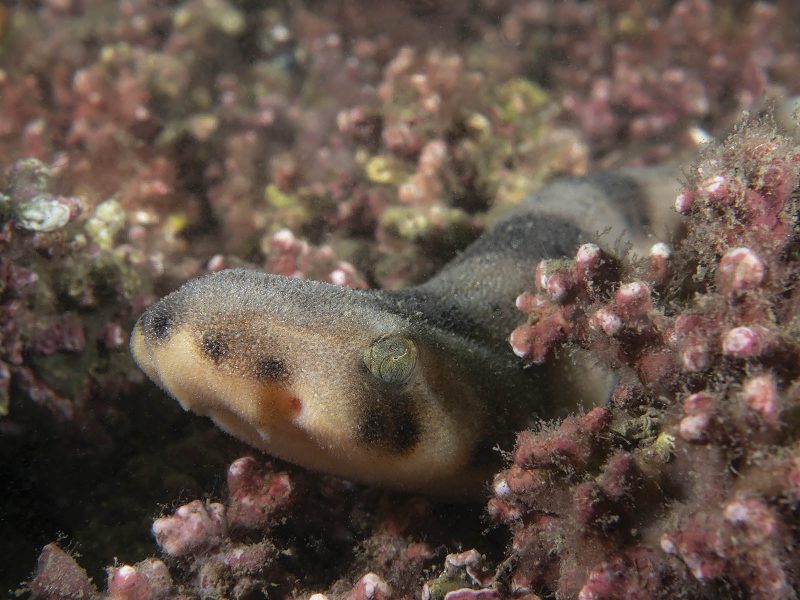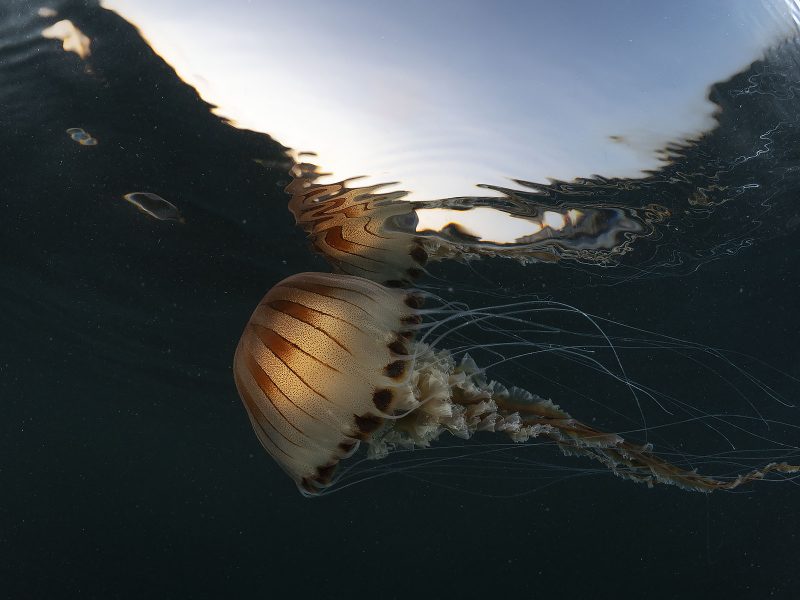6 Mistakes to Avoid When Taking Underwater Photos

There are lots of mistakes that can be made in underwater photography, especially when you first begin. However, this is not a reason to worry, as most of them can be easily avoided. Making mistakes is part of the process: we have all fallen victim to poor lighting, blurry, unfocused images, or rushing and forgetting to remove the dreaded lens cap!
Learning from your mistakes, recognising the things that aren’t quite right, and taking the time to learn how to fix them are some of the quickest ways to improve your underwater imagery.

1. Diving with the wrong people
We have all been there: diving as part of a large group at a new site, and you spot an amazing sea creature. Naturally, you stop to get a few photos, but before you know it you’re at the back of the pack and about to lose the group.
Nobody wants to be in this position. Not only are you not focusing on taking the best images possible, but you can end up in a situation that isn’t safe. This scenario isn’t going to give you enough time with your subject to be creative, and capture the perfect image.
Try to avoid diving with big groups who want to cover a large area. Rushing underwater photography is never a good idea. It’s best to dive with a buddy who also has a camera, or as part of a photography group. Try to use a similar lens to your buddy and discuss lens choice before setting up your camera.
A buddy on wide-angle will likely get frustrated if you’re moving slowly with a super macro lens, looking for tiny critters. You want to be focused on the image-making process, not the other divers.
Read more: Introduction to underwater photography
2. Failing to plan the dive
I have to admit that I’ve wasted quite a few dives by being optimistic and expecting the conditions to be better at the dive site than they are. There is nothing worse than ducking under the water with a wide-angle lens, only to find you can barely see your own fins.
If there has been a lot of wind or rain, the visibility will be poor. In these conditions a macro is the best lens choice.
However, on a calm, sunny day, after a few days of good weather, a wide lens is more favourable, especially if the sun is out. Local divers and clubs are also great for checking on current conditions. They will have information on algae blooms and local species which weather apps are unable to predict.
3. Rushing camera set-up
Always take a test shot before entering the water. This will usually find any camera issues before it’s too late. Once you’re underwater there isn’t much you can do to solve the problem without aborting the dive, and the last thing you want is a camera flood from rushing your set-up.
Leaving the lens cap on inside the housing is a common mistake that is easily avoided by taking a test shot. It’s good practice to take your time when setting up your camera, making sure everything is on, in the right place, and fully charged.
Taking flat batteries, leaving the camera on, forgetting to turn on leak alarms or flash triggers, and not cleaning o-rings: these are all things that I have done in the past when rushing to get my camera ready. It’s frustrating when something so simple and easily avoided can ruin a photo dive.
Read more: What equipment do you need for underwater photography
4. Poor strobe positioning
The biggest mistake photographers make is either having too much light or not enough light. Too much light means one thing only: backscatter. On the other hand, too little light can leave your images looking blue and flat. It’s all about finding a balance.
Backscatter causes a lot of problems. Especially if the site is silty, it can leave your images looking like a snowy winter’s day. I often delete images which have too much backscatter, simply because of the hours of post-production needed to correct it.
The angle of your strobes plays a huge role in lighting the image. Try to keep the lighting even. Its best to generally keep your strobes in the 10 and 2 position and slightly behind the lens. If you’re still learning, keep your strobes in this position and make minor adjustments when needed.
For example, if you move closer to the subject then you need to bring the strobes closer to the housing.
5. Subject selection
Choosing the right subject to photograph is probably the most challenging part of underwater photography. Avoid messy backgrounds which can distract from the subject, and try not to get too fixated on subjects in unfavourable positions.
I have wasted so many hours photographing rare subjects which were in awkward, hard to reach positions, only to be disappointed with the final result.
Another common mistake is having a beautiful wide-angle of the underwater landscape, but with no prominent feature or subject. Try changing the angle and being patient, waiting for something extra to move into the frame.
6. Not taking enough photos
I often see underwater photographers who find a subject, take one photograph, and move on to find something else. Even with a camera set to auto, one image is never going to be enough. Ideally you want to be taking at least five photographs of a subject before moving on. If a subject is moving quickly then this isn’t always possible, but try to take more if you can.
When I come across a well positioned subject I can easily take 20 or 30 photographs, each at a slightly different angle. This gives me a choice of image, and allows for accidental blur or poor composition.
It is always better to have too many photos to choose from, rather than not enough. The last thing you want is to have one photograph of a rare fish that is out of focus!
In conclusion
Embrace the mistakes you have made, and learn from them. They happen to the best of us. The best thing you can do is identify mistakes that you have made, do some research, learn how to fix them, and try again.
Don’t be afraid to ask other photographers for help. The underwater photography community is generally very helpful and happy to share knowledge.










